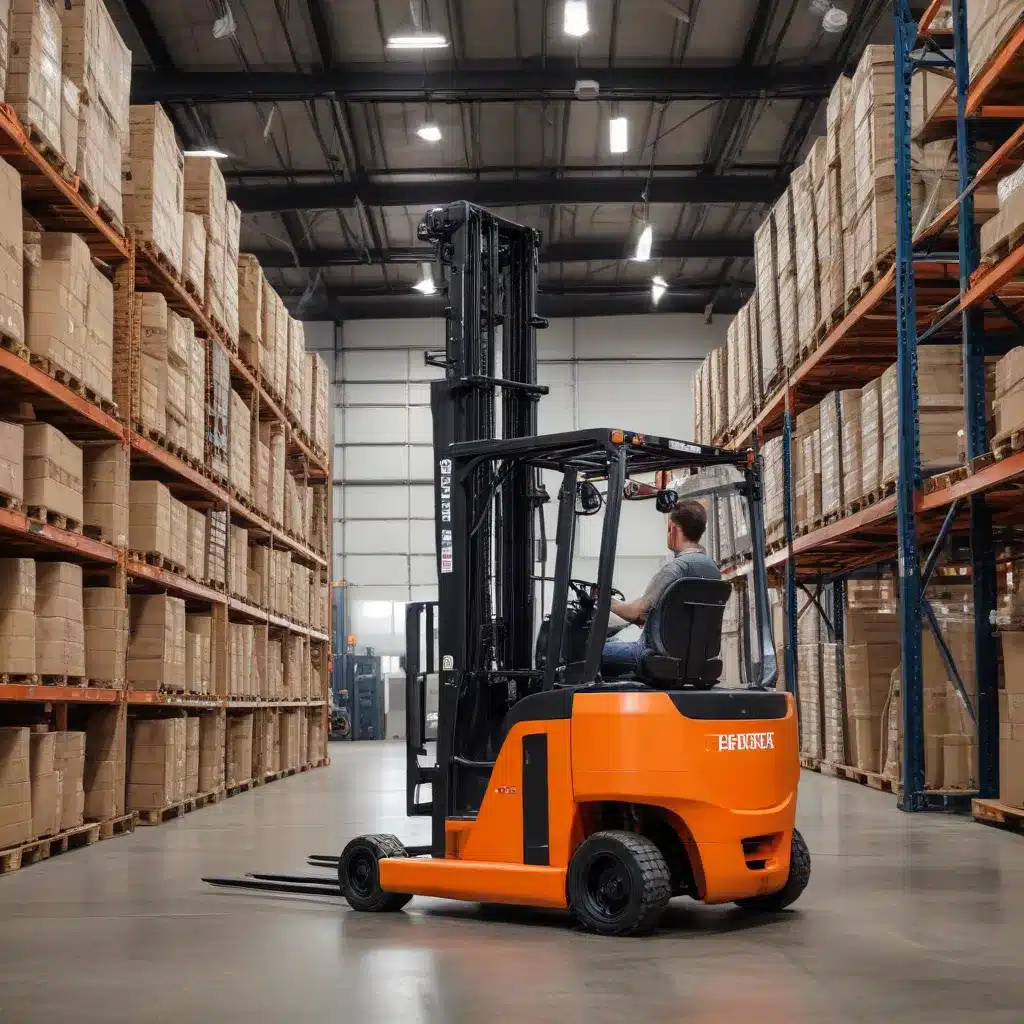
In the dynamic world of material handling, the debate between electric and gas-powered forklifts has gained significant traction, with industry experts exploring the benefits and trade-offs of each technology. As a seasoned professional in the forklift industry, I’m excited to delve into this topic and provide you with a comprehensive understanding of the fuel-efficient future that lies ahead.
The Rise of Electric Forklifts
The growing popularity of electric forklifts can be attributed to several key factors, chief among them being their environmental impact and cost-effectiveness. Unlike their gas-powered counterparts, electric forklifts produce zero direct emissions, making them an attractive choice for businesses committed to sustainable operations and reducing their carbon footprint.
The multiple fuel sources used to generate electricity, including natural gas, coal, nuclear energy, wind, hydropower, and solar, provide a more diverse and secure energy source for the electrified portion of the transportation sector. This diversity enhances energy security and reduces reliance on imported petroleum, which can be subject to market volatility.
Moreover, electric forklifts typically have lower fuel costs compared to gas-powered models. While the initial purchase price may be higher, the ongoing savings in fuel and maintenance can offset this difference over time. Additionally, various government incentives and tax credits are available to offset the upfront costs, further improving the financial viability of electric forklifts.
Advancements in Battery Technology
One of the primary concerns surrounding electric forklifts has been the limited range and lengthy charging times associated with their battery systems. However, recent advancements in battery technology have addressed these challenges, making electric forklifts a more viable and practical option for a wider range of applications.
Manufacturers are now offering electric forklifts with extended battery life and faster charging capabilities, reducing the downtime required for recharging. The National Renewable Energy Laboratory’s predictive modeling suggests that today’s forklift batteries may last 12 to 15 years in moderate climates, with proper care and maintenance.
Furthermore, as battery production volumes increase and technology continues to mature, the costs of replacement batteries are expected to decline, further enhancing the long-term cost-effectiveness of electric forklifts.
Emissions and Environmental Benefits
The environmental benefits of electric forklifts are undeniable. With zero tailpipe emissions, they eliminate the release of harmful pollutants such as nitrogen oxides (NOx) and particulate matter, which can have significant impacts on air quality and human health.
However, it’s important to note that the overall emissions of an electric forklift depend on the source of electricity used to charge it. In regions that rely heavily on low-polluting energy sources, such as renewable or nuclear power, the life cycle emissions of electric forklifts can be significantly lower than their gas-powered counterparts. Conversely, in areas that predominantly use conventional electricity generation, the emissions benefits may not be as pronounced.
To help businesses make informed decisions, the Electricity Sources and Emissions Tool provided by the U.S. Department of Energy’s Alternative Fuels Data Center can be a valuable resource, allowing users to compare the fuel-cycle emissions of different vehicle types based on their location.
Maintenance and Safety Considerations
One of the key advantages of electric forklifts is their relatively low maintenance requirements compared to gas-powered models. With fewer moving parts and the absence of an internal combustion engine, electric forklifts often require less frequent servicing and fewer replacements of wear-and-tear components.
Additionally, electric forklifts tend to be quieter in operation, which can enhance workplace safety and improve communication between operators and personnel in the work environment. The reduced noise levels also contribute to a more comfortable working experience for forklift operators.
When it comes to safety, electric forklifts offer several benefits. The lack of engine exhaust eliminates the risk of carbon monoxide exposure, a common concern with gas-powered forklifts in enclosed spaces. Furthermore, electric forklifts often have enhanced stability and maneuverability, thanks to their lower center of gravity and precise control systems, reducing the risk of tip-overs and other accidents.
Addressing Range and Charging Limitations
While the charging infrastructure for electric forklifts is not as ubiquitous as gas stations, the availability of charging stations is steadily improving. Businesses can install charging equipment on-site, allowing forklift operators to recharge their vehicles during breaks or overnight. This flexibility can help mitigate the concerns over limited range and lengthy charging times.
Moreover, the introduction of fast-charging systems and opportunity charging strategies, where forklifts are charged during short breaks or downtime, has helped address the issue of limited range. These advancements enable electric forklifts to maintain productivity levels comparable to their gas-powered counterparts.
For businesses with operational requirements that may exceed the capabilities of a single electric forklift, the option of plug-in hybrid electric vehicles (PHEVs) provides an alternative solution. These hybrid models combine electric and gas-powered systems, allowing them to switch between the two power sources as needed, thereby expanding their operational flexibility.
The Future of Forklift Fleets
As the industry continues to evolve, the future of forklift fleets is undoubtedly tilting towards electric power. Governments, utilities, and industry associations are actively working to establish a robust network of public and private charging infrastructure, making it easier for businesses to transition to electric forklifts.
Moreover, the declining costs of battery technology, coupled with the increasing availability of incentives and tax credits, are making electric forklifts a more attractive and financially viable option for businesses of all sizes.
By embracing electric forklifts, companies can not only contribute to environmental sustainability but also reap the benefits of lower fuel and maintenance costs, enhanced workplace safety, and improved energy security. As the industry moves towards a fuel-efficient future, the choice between electric and gas-powered forklifts is becoming increasingly clear.
To stay ahead of the curve, I encourage you to explore the Forklift Reviews website, where you can find detailed comparisons, safety guidelines, and the latest industry insights to guide your forklift purchasing and fleet management decisions. Together, we can navigate the exciting transition towards a more sustainable and cost-effective material handling landscape.

